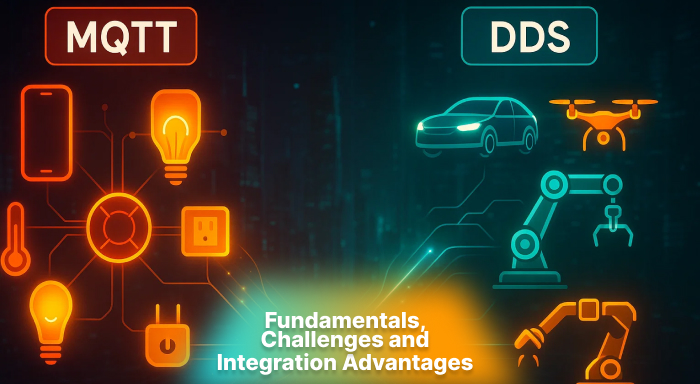
In the rapidly expanding world of the Internet of Things (IoT), communication protocols serve as the backbone of data exchange between devices, systems, and applications. Among the myriad options available, DDS (Data Distribution Service) and MQTT (Message Queuing Telemetry Transport) stand out as two widely adopted standards, each with its own strengths, weaknesses, and ideal use cases. Understanding these protocols is crucial for architects and developers who aim to build scalable, real-time, and reliable IoT ecosystems.
Fundamentals: What Are DDS and MQTT?
MQTT: Lightweight Messaging for Constrained Devices
MQTT is a publish-subscribe messaging protocol designed for low-bandwidth, high-latency, or unreliable networks. It is extremely lightweight, making it suitable for resource-constrained devices such as sensors and actuators. MQTT uses a broker to mediate communications between publishers and subscribers, which helps in decoupling message producers from consumers.
Key features of MQTT:
- Simple and minimal overhead
- Ideal for telemetry data and remote monitoring
- Supports Quality of Service (QoS) levels for message delivery
- Widely used in cloud-to-edge communications
DDS: Real-Time Data-Centric Publish-Subscribe
DDS, on the other hand, is a middleware protocol and API standard designed for real-time systems that require deterministic data delivery. Unlike MQTT, DDS does not rely on a centralized broker; it uses a peer-to-peer architecture and a rich set of Quality of Service (QoS) policies to manage data distribution.
Key features of DDS:
- Real-time, high-performance data exchange
- Fine-grained QoS control (latency, reliability, liveliness)
- Brokerless architecture for low-latency and high availability
- Suitable for complex distributed systems like autonomous vehicles, robotics, and defense
Challenges in Implementation
While both DDS and MQTT have proven track records, each presents its own set of challenges:
MQTT Challenges:
- Not designed for high-throughput or low-latency applications
- Reliance on a central broker can be a single point of failure
- Limited QoS capabilities compared to DDS
- Not inherently suited for peer-to-peer or real-time applications
DDS Challenges:
- Higher complexity and learning curve for developers
- Larger footprint compared to MQTT, which may not suit constrained environments
- Requires careful QoS tuning to avoid performance degradation
Integration Advantages: Best of Both Worlds
In many IoT environments, especially those involving both edge and cloud components, integrating DDS and MQTT can provide a balanced solution. While DDS excels at real-time, intra-system communication, MQTT is ideal for sending summarized or event-driven data to the cloud or user interfaces.
Benefits of Integrating DDS and MQTT:
- Scalability: DDS handles high-frequency, real-time data locally, while MQTT handles lower-frequency data transmission to the cloud.
- Flexibility: Developers can optimize for both low-power devices and real-time applications.
- Reliability: DDS ensures deterministic delivery in mission-critical systems; MQTT adds lightweight communication layers for non-critical endpoints.
- Security and Isolation: Each protocol can operate in its ideal domain with appropriate security and access controls.
The Role of the DDS Protocol in IoT
The DDS Protocol in IoT play a pivotal role in supporting real-time, data-centric communication in systems where performance, reliability, and determinism are non-negotiable. Its ability to manage complex data flows with robust QoS settings makes it an excellent choice for applications such as industrial automation, healthcare devices, connected vehicles, and robotics.
Conclusion
Both DDS and MQTT bring valuable features to the table, and choosing the right one—or integrating both—depends heavily on the specific requirements of your IoT application. While MQTT offers simplicity and efficiency for low-power communication, DDS delivers unmatched performance for real-time, mission-critical operations. By understanding their fundamentals, navigating their challenges, and strategically integrating them, developers can build robust, future-ready IoT solutions.
Related Posts:
How Physical Designs of IoT Work
Understanding the Difference Between IoT Sensors and Actuators in IoT